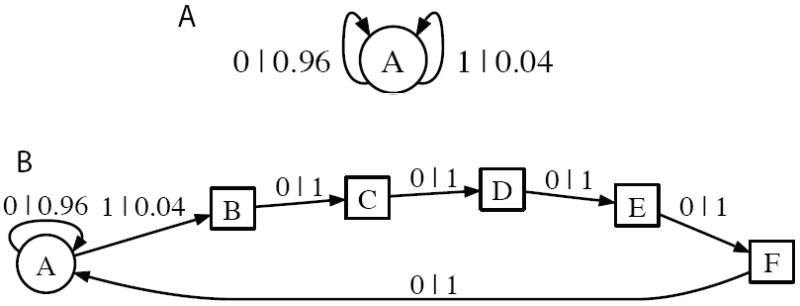FIG. 1.

Two simple CSMs reconstructed from 200 sec of simulated spikes using CSSR. States are represented as the nodes of a directed graph. The transitions between states are labeled with the symbol emitted during the transition (1 = spike, 0 = no spike) and the probability of the transition given the origin state. (A) The CSM for a 40 Hz Bernoulli spiking process consists of a single state A which always transitions back to itself, emitting a spike with probability p = 0.04 per msec. (B) CSM for 40 Hz Bernoulli spiking process with a 5 msec refractory period imposed after each spike. State A again spikes with probability p = 0.04. Upon spiking the CSM transitions through a deterministic chain of states B–F (squares) which represent the refractory period. The increased structure of the refractory period requires a more complex representation.
